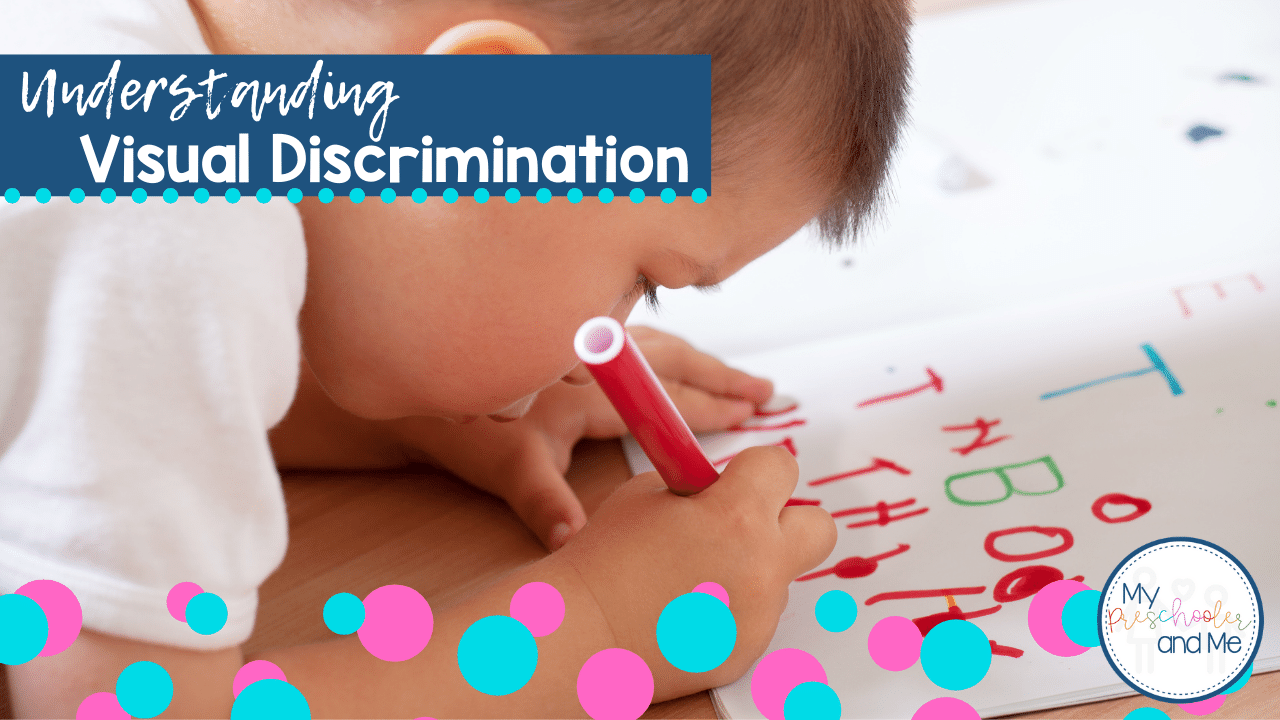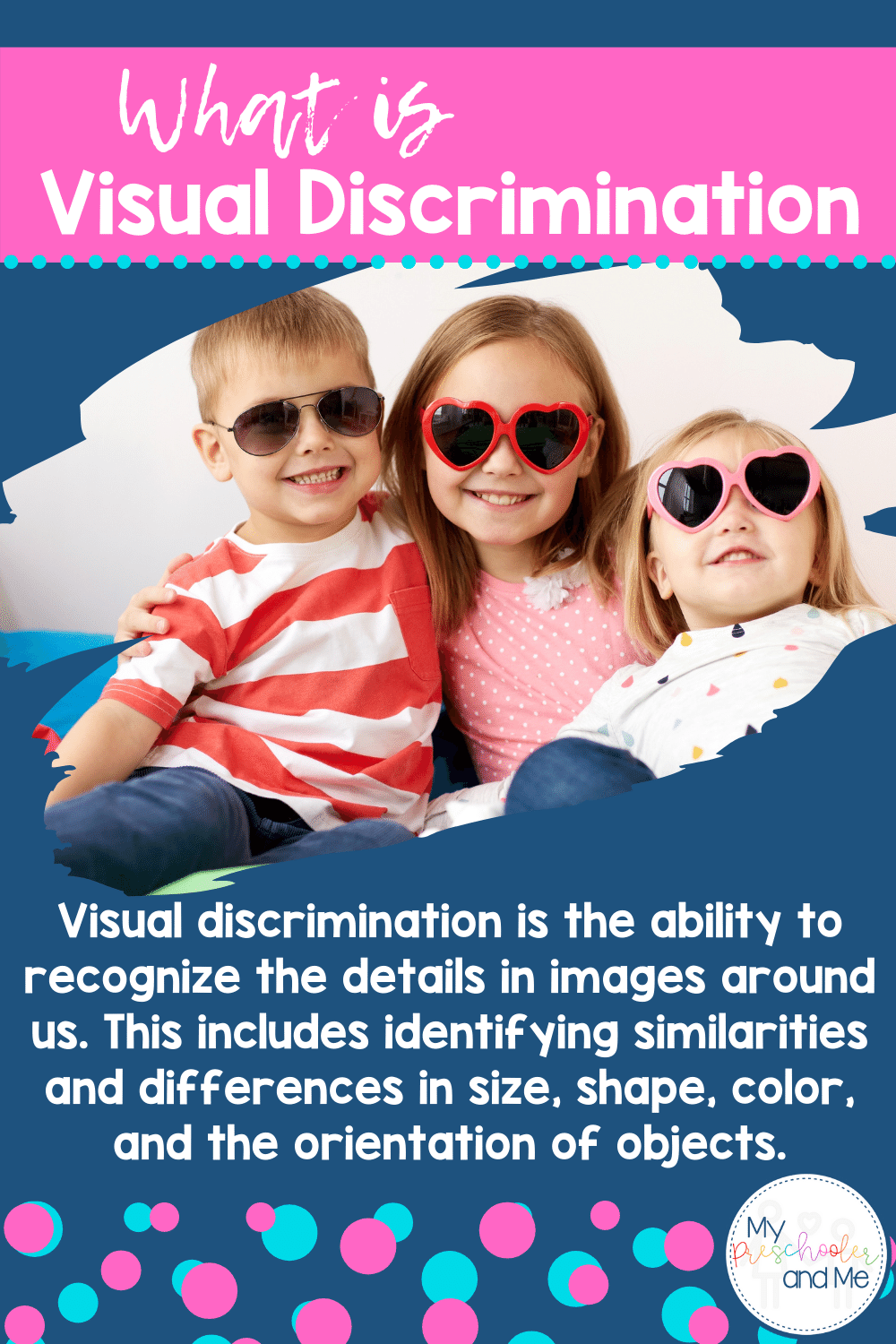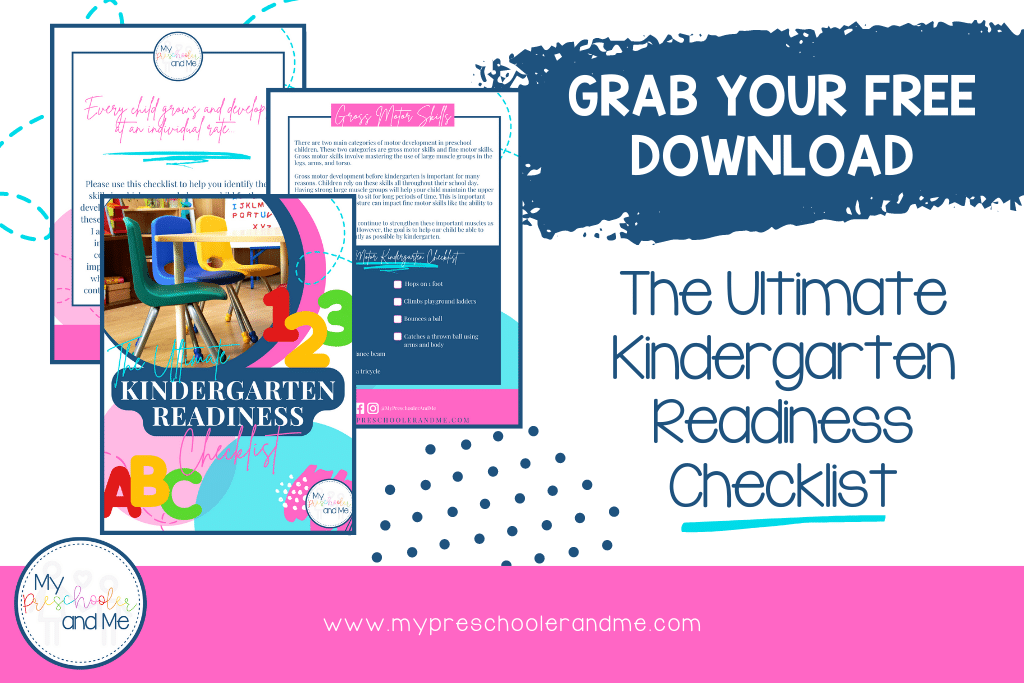
What is Visual Discrimination and Why is it Important For Your Preschooler?
Are you familiar with visual discrimination and how it relates to your preschooler? Most likely, if you don’t have a background in teaching, you’ve probably never even heard of the term visual discrimination before.
However, as you keep reading, I bet you will find that you are more familiar with visual discrimination than you think. For instance, have you ever seen a preschooler confuse the letters -b and -d or -p and -q?
Perhaps your own child writes his or her numbers and letters backwards. Let’s not forget about those children who do not yet even understand the difference between numbers and letters.
Sometimes examples such as these can cause parents and teachers to panic unnecessarily. Caregivers fear that their child might be dyslexic. While dyslexia is still possible for some children, the good news is that most children are completely fine.
These mistakes are simply visual discrimination errors. It takes time and maturity for young children to correct these common points of confusion. They are still developing their visual discrimination skills.
In this post, we are going to address all things related to visual discrimination. It is our hope to give you a better understanding of the term and provide you with ideas on how you can help your preschooler develop strong visual discrimination skills. This is important because these skills will be useful throughout your child’s school-age years.
Before we get started, are you curious about what skills your preschooler needs to be practicing in order to be prepared for kindergarten? Be sure to grab a copy of our free checklist: The Ultimate Kindergarten Readiness Checklist. You can download your free copy here.
What is Visual Discrimination?

Before you can begin helping your preschooler develop his or her visual discrimination skills, you must first understand the meaning of the term. Once you understand the term, you can begin teaching the concept to your child.
Visual discrimination is the ability to recognize the details in images around us. This includes identifying similarities and differences in the size, shape, color, and orientation of objects.
We can help children develop this skill by providing activities that encourage them to focus on specific details. Simple matching games and books such as “Where’s Waldo” and “I Spy” are a few great tools we can use to encourage young children to focus more on details.
Why is Visual Discrimination Important?
Visual discrimination is important for many different reasons. When your preschooler starts to identify the letters in the alphabet, your child is relying heavily upon these skills.
Visual discrimination helps your child notice the differences (and similarities) between letters. Your child’s brain is learning to distinguish between different letter shapes. It’s noticing that some letters have lines while others just have curves. It’s also noticing that some letters have both lines and curves.
Visual discrimination skills help your child’s brain make sense of this new information. As your child grows and matures, so do these skills. With practice, your child learns to associate a specific letter’s shape with its correct letter name. The same applies when your child is learning to identify numbers.
After identifying letters and numbers, it’s generally time to start practicing writing them. Some preschoolers will write a few letters and/or numbers backwards and not even realize it. Once again, visual discrimination skills come into play.
Eventually, most children will start self-correcting letters and numbers written backwards. Specifically, it becomes easier for children to tell the difference between trickier letters like lowercase -b and -d.
Most children’s visual discrimination skills improve naturally as they grow. However, you can provide your child with specific activities to increase the speed of this process. Making a conscious effort to plan two or three activities per week can make a huge, positive impact on the development of your child’s visual discrimination skills.
What is Visual Discrimination in Reading?

One of the main reasons you should expose your child to activities that encourage strong visual discrimination skills is because visual discrimination plays a large role in a child’s ability to learn to read.
Initially, children begin reading by learning to blend letter sounds together in short words. In order to blend those sounds, the child must first identify the letter on the page and then say the associated sound. This requires the use of visual discrimination skills.
As your child continues building upon his or her reading skills, he or she will start to recognize common letter combinations like -sh, -th, and -ch.
Visual discrimination skills will help your child notice and find these letter combinations within words. Eventually, your child will learn to use those letter combination sounds to decipher longer, more difficult words.
Visual discrimination directly relates to reading fluency. If a child struggles to identify letters within words, it is going to be difficult to come up with the correct sounds. It may cause the child to stumble over words or even have to go back and reread more than expected.
All of this combined is going to impact the speed at which a child can read. This may also impact a child’s ability to comprehend the story. Comprehension is another important piece of learning to read.
If you’d like to learn more about how visual discrimination impacts reading, check out this blog post from Scholar Within for more information.
It can be difficult to get preschoolers interested in reading. If you’d like to learn our tips and tricks, here’s how we recommend helping your preschooler establish a love for reading without a struggle.
Visual Discrimination in Math

Just like reading, visual discrimination plays a large part in your preschooler’s ability to understand math. Think about all the different symbols used for math.
If children have not been taught from a young age how to look closely at details, they could easily mistake an addition sign for a subtraction sign or vice versa.
With that in mind, it is quite common for preschoolers to overlook addition and subtraction symbols, so do not be alarmed if your preschooler confuses math symbols when completing simple equations. If this happens, encourage your child to take his or her time and look at the problem again.
To learn more about how visual discrimination skills impact math for young children, hop on over to Down River Resources post all about visual discrimination and math.
Encouraging the Development of Visual Discrimination Skills

There are many simple ways you can encourage the development of visual discrimination skills within your preschooler. Planning such activities does not have to be an elaborate process. Try to look for teaching opportunities throughout your daily routine.
As you are driving with your preschooler, point out the different signs to familiar restaurants, or ask your child to help you find three stop signs on the drive home. Exposure to environmental print is great for young children.
Even though most younger children cannot read yet, most children will begin to recognize these restaurant signs simply by the shapes and colors observed.
If you want to take it a step further, you can expose your child to environmental print by hanging posters of restaurant signs and road signs around your playroom at home.
You could also create an environmental print booklet with real photos for your child to look at independently.
Here are some more activities you can do with your preschooler to encourage the development of visual discrimination skills:
- Play Memory
- Invite your preschooler to help sort the silverware from the clean dishwasher basket
- Play simple matching games with pictures or matching games with letters
- Sort shapes using everyday objects
- Sort coins by type
- Do a scavenger hunt
- Complete spot-the-difference activities
- Search for letters or numbers in the world around us
- Practice matching socks
- Read books like “I Spy” and ”Where’s Waldo?” together
Here is a fun YouTube video from K5 Hidden Peak Education of a spot-the-difference game. Have your child point to the object on the screen that is different.
How Do Poor Visual Discrimination Skills Affect Children?

Younger children with poor visual discrimination skills may struggle with simple tasks such as matching socks, sorting silverware from the dishwasher into the correct section of the drawer, or noticing subtle differences between objects.
Older school-age children who are struggling with visual discrimination skills may still confuse letters such as -b and -d. They may also write letters or numbers backwards or struggle to complete spot-the-difference worksheets.
While reading, students may accidentally read the word “cat” as “car.” Additionally, some students may have difficulties with reading a map or looking up words in a dictionary.
Completing activities that encourage strong visual discrimination skills can be wonderful for helping children of all ages. Over time, and with a little extra help, most children begin to self-correct some of these issues independently.
What to Do If You Suspect Your Child Has a Visual Processing Disorder
If you suspect your preschooler might be dealing with a visual processing disorder, do not panic. Reach out to your pediatrician for further evaluation.
Your pediatrician can refer your child to an occupational therapist or another medical professional who is trained to help in this area. After meeting with these professionals, you could request a list of interventions to try using at home to help your child.
We hope you found this post helpful and useful. Please feel free to reach out to us with any questions.
Happy Teaching!
*Before you go, did you want to know that you can get your preschooler ready for kindergarten in just 30 minutes per week? Want to know how? Check out our Journey to Kindergarten Membership! It's your one-stop shop for kindergarten readiness fun with your child! Click here to learn more!



